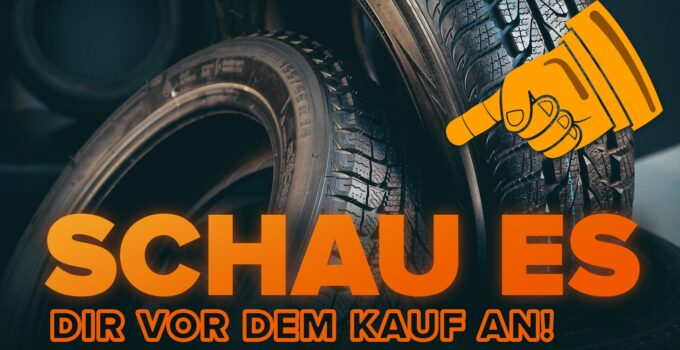
- Recommendation of the car manufacturer.
Read the owner's manual for your vehicle.
Important information about your tires may also be found on labels attached to the following locations:- on the fuel filler flap;
- on the door pillar;
- on the door jamb on the driver's side;
- on the lid of the glove box.
- Season and weather.
Think about the weather conditions in the area where you will be riding.
Winter tires are marked M + S (Mud + Snow), M & S, MS, Winter or a snowflake icon.
A sun symbol or no marking means that they are summer tires.
All-season tires are marked with AS (Any Season/All Seasons), R + W (Road + Winter), AW (All Weather/Any Weather). . - Tire size.
Choose tires that are the size recommended by the car manufacturer.
Or buy tires with the same dimensions and specifications as those already installed on your car.
3.1 width.
Be aware that the optimum tire width for each individual car model is calculated based on the vehicle's weight and power, and has certain limitations.
Advantages of wide tires:- improved handling at high speeds;
- improved road holding;
- improved acceleration;
- reduced braking distance for summer tires on dry roads;
- reduced braking distance for winter tires on wet roads.
Disadvantages of wide tires: < ul>
- heavier wheel weight;
- increased risk of aquaplaning;
- longer braking distance for summer tires on wet roads;
- increased fuel consumption;
- higher load on the chassis;
- more expensive.
- improved handling at high speeds;
- improved road holding;
- improved acceleration;
- reduced Braking distance.
- reduced comfort for driver and passengers;
- increased load on the suspension;
- higher fuel consumption.
- Speed Index.
The maximum maximum speed is represented by the letters A to Y, where A is the minimum value (40 km/h) and Y is the maximum value (300 km/h). - load index.
The maximum permissible load for a wheel is represented by a number from 60 to 129. Each of these indicators corresponds to a specific value in kilograms. - Tread pattern.
Take into account the operating conditions of your vehicle.
Tires with symmetrical and non-directional patterns are suitable for smooth driving. They are not expensive, have balanced characteristics and can be mounted on wheels on both sides and axles.
Directional tires are essential for rainy areas. These prevent aquaplaning to a large extent.
Tires with asymmetrical patterns are suitable for sporty driving. They are versatile and offer the vehicle stability on both dry and wet roads. - With tube/tubeless.
Use tires that have the same specifications as those previously mounted on the car.
Tubed tires are marked as TUBE TYPE (TT), tubeless as TUBELESS (TL). - Temperature ID (heat resistance at high speeds).
Most often given as temperature A, B or C, with A being the best. - Fuel efficiency class.
This is denoted by the letters A to G, with A being the most efficient type. - Noise class.
This is indicated by a pictogram of sound waves. One sound wave means that the noise emission of the tire is at least 3 dB lower than the limit, two sound waves mean that it is on the limit and three mean that the limit is exceeded. - Wet grip class .
This is marked with the letters A to F, where A represents the shortest braking distance and F the longest. - Date of manufacture.
Four digits are usually given: the first two indicate the week and the last two indicate the year of manufacture. - Maximum tire pressure.
This indicator is regulated by car manufacturers.
It consists of a number and a unit of measurement.
Possible consequences of insufficient tire pressure:- Overheating of the tyre;
- Accelerated tread wear;
- Destruction of the tire carcass;
- increased fuel consumption;
- impaired handling;
- risk of damage to the rim.
Possible consequences of excessive tire pressure:
- Accelerated tread wear.
- Destroying the tire cord.
- Accelerated suspension wear.
- Increased braking distance.
- Danger that the tyres bursts.
- Deteriorated road holding.
- Tire stiffness.
Stiffer tires are more resistant to abrasion. Softer ones have a better grip. - Manufacturer.
Only take products from reputable brands: they will last longer.
In addition to manufacturing and testing facilities, major manufacturers have their own research centers that allow the development and application of innovative technologies. - Legislation in your country.
Check if your country allows the use of:- Winter and summer tires in snow, ice, slush and sub-zero temperatures;
- Studded tires;
- Snow chains ;
- Tires with treads less than 4 mm.
3.2 profile height.
Be aware that the optimum profile height is calculated for each individual car model, based on the vehicle's weight and horsepower, and has certain limitations.
Advantages of tires with low profile:
Disadvantages of tires with low profile:
3.3 rim diameter.
Be aware that the optimal rim diameter for each individual car model is calculated based on the vehicle's weight and power, and has certain limitations.
Do you want to select and buy tyres? Follow the link: CarTipsandmore tires
